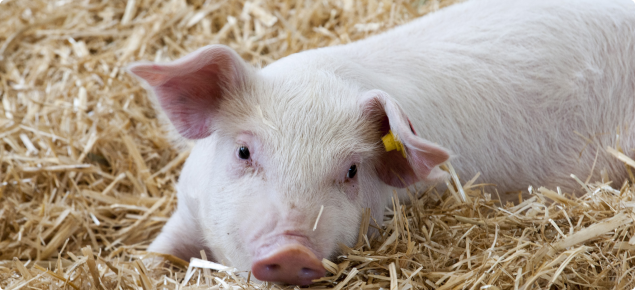How could classical swine fever enter Australia?
Classical swine fever could enter Australia by:
- illegally imported meat and dairy products (swill/prohibited pig feed) being fed to pigs
- illegally imported animals or genetic material
- people returning from overseas with the virus on their clothing, footwear or equipment.
What would an outbreak mean?
An outbreak of classical swine fever would result in high pig death rates, culling and loss of market access. According to 2001 modelling by Garner et al, an outbreak of classical swine fever in an Australian pig production region would cost more than $57 million in loss of sales and disposal costs alone. Additionally there would be high-level socio-economic impacts in affected areas.
The last outbreak of classical swine fever in Australia was eradicated in 1961.
If classical swine fever became established in feral pig populations, it would be extremely difficult to eradicate the disease, which would have long-term impacts on the pig industry.
What can you do?
- Reduce the risk of an outbreak:
- Do not feed swill/prohibited feeds to pigs.
- Implement a best practice biosecurity plan – see the National Farm Biosecurity Manual for Pork Production, available from farmbiosecurity.com.au.
- Know the signs of classical swine fever.
- Immediately report any signs of classical swine fever to a vet.
How does classical swine fever spread?
The classical swine fever virus is highly contagious and is stable over a wide pH and temperature range. Similar to African swine fever, classical swine fever can persist in the environment and in meat products for extended periods. The disease can be spread through blood, saliva, urine, semen, skins and hides, and manure of infected animals.
The virus spreads between animals by:
- feeding pigs prohibited pig feeds (swill)
- direct contact with an infected animal
- movement of infected animals
- movement of contaminated animal products (such as semen or manure), vehicles, equipment and people.
Animals usually show signs of classical swine fever 2–6 days after being infected. However, if infected prenatally they may become persistently infected and it may take several months before expressing signs of disease.
Signs of classical swine fever
Classical swine fever is an extremely variable disease. The severity of signs depends on the strain of virus. Classical strains show high rates of sickness and death. The chronic form of the disease may present with reduced productivity and similar signs to some common pig diseases.
Signs of classical swine fever may include:
- increased death rate
- high fever and loss of appetite
- skin reddening, blueness of extremities (including ears)
- coughing and difficulty breathing
- conjunctivitis
- diarrhoea, vomiting
- abortions.
Early reporting is key
Recognising and reporting classical swine fever early so that we can contain the spread of the disease is the only way to reduce the enormous financial and social damage of an outbreak. If you see any of these disease signs, call:
- your private vet or
- your local Department of Primary Industries and Regional Development (DPIRD) vet or
- the Emergency Animal Disease hotline on 1800 675 888.
See the Livestock Biosecurity contacts webpage at agric.wa.gov.au for your nearest DPIRD vet.
Reference: Garner MG1, Whan IF, Gard GP, Phillips D, The expected economic impact of selected exotic diseases on the pig industry of Australia. Rev Sci Tech. 2001 Dec 20(3):671-85.

